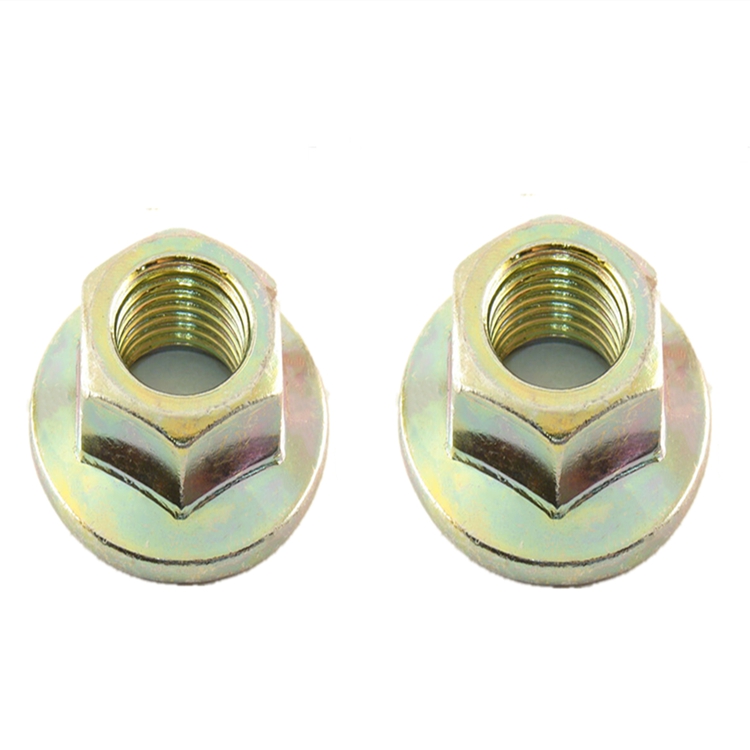a307 bolts
sij . 22, 2025 05:31 Back to list
a307 bolts
The A307 bolt, a staple in the construction and engineering sectors, represents a blend of strength, reliability, and adaptability, making it indispensable for various applications. Understanding the intrinsic qualities and multifaceted uses of A307 bolts can greatly influence the decision-making process for industry professionals, promoting efficiency and safety in projects.
Comparatively, A307 bolts provide an advantage in applications where neither high nor critical load-bearing capacity is compulsory, contrasting with higher grades like A325 or A490 which are designed for more demanding environments. Their main allure lies in ease of availability and cost-effectiveness while still adhering to safety standards for non-critical connections. Understanding these differences allows engineers and procurement specialists to align project needs with bolt capabilities accurately, fostering cost efficiency without compromising safety. Expert Insights into Quality Assurance Experts emphasize the significance of sourcing A307 bolts from reputable manufacturers who adhere strictly to ASTM standards, ensuring material quality and dimensional accuracy. The value proposition of quality assurance lies in the prevention of structural failures and maintenance overheads. Investing in high-quality bolts reduces potential downtime and repair costs, ultimately enhancing project success rates. Future Trends and Innovations The landscape for A307 bolts is gradually shifting as technological advancements such as smart coatings and real-time structural load monitoring systems gain traction. These innovations aim to enhance the bolts' resistance to various environmental stresses and provide insights into the structural health of the assemblies, preemptively highlighting areas of concern before they escalate into critical issues. Staying abreast of these trends allows businesses to maintain a competitive edge through improved reliability and reduced maintenance costs. Conclusion A307 bolts, with their inherent versatility and cost-efficiency, remain a cornerstone in multiple industries, providing reliable solutions for general-purpose fastening needs. Their unique balance of strength, availability, and adaptability affirms their continued relevance even as the industry advances. By emphasizing best practices in installation and quality assurance, leveraging expert knowledge, and accommodating future innovations, industry professionals can ensure optimal outcomes in their projects. Understanding the capabilities and limitations of A307 bolts ultimately empowers decision-makers to choose the most effective solutions for their specific context, solidifying trust and authority in their use.


Comparatively, A307 bolts provide an advantage in applications where neither high nor critical load-bearing capacity is compulsory, contrasting with higher grades like A325 or A490 which are designed for more demanding environments. Their main allure lies in ease of availability and cost-effectiveness while still adhering to safety standards for non-critical connections. Understanding these differences allows engineers and procurement specialists to align project needs with bolt capabilities accurately, fostering cost efficiency without compromising safety. Expert Insights into Quality Assurance Experts emphasize the significance of sourcing A307 bolts from reputable manufacturers who adhere strictly to ASTM standards, ensuring material quality and dimensional accuracy. The value proposition of quality assurance lies in the prevention of structural failures and maintenance overheads. Investing in high-quality bolts reduces potential downtime and repair costs, ultimately enhancing project success rates. Future Trends and Innovations The landscape for A307 bolts is gradually shifting as technological advancements such as smart coatings and real-time structural load monitoring systems gain traction. These innovations aim to enhance the bolts' resistance to various environmental stresses and provide insights into the structural health of the assemblies, preemptively highlighting areas of concern before they escalate into critical issues. Staying abreast of these trends allows businesses to maintain a competitive edge through improved reliability and reduced maintenance costs. Conclusion A307 bolts, with their inherent versatility and cost-efficiency, remain a cornerstone in multiple industries, providing reliable solutions for general-purpose fastening needs. Their unique balance of strength, availability, and adaptability affirms their continued relevance even as the industry advances. By emphasizing best practices in installation and quality assurance, leveraging expert knowledge, and accommodating future innovations, industry professionals can ensure optimal outcomes in their projects. Understanding the capabilities and limitations of A307 bolts ultimately empowers decision-makers to choose the most effective solutions for their specific context, solidifying trust and authority in their use.
Next:
Latest news
-
Reliable Cabinet Bolts Supplier | Quality & Bulk Fasteners
NewsAug.07,2025
-
Wire Bolts Suppliers & Manufacturer | Factory Direct Price
NewsAug.06,2025
-
Premium Wire Bolts Suppliers | High-Quality Bolts
NewsAug.05,2025
-
Trusted Wire Bolts Suppliers - Durable & Reliable Solutions
NewsAug.04,2025
-
Wire Bolts Company | Premium Industrial Fasteners
NewsAug.03,2025
-
Top Wire Bolts Suppliers | AI-Optimized Fast Delivery
NewsAug.02,2025
